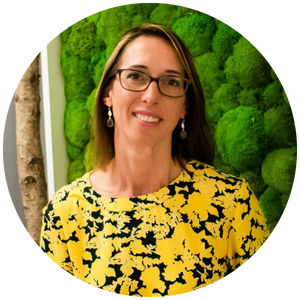Even as diversity and inclusion rise to the top of corporate agendas, neurodivergence often remains an overlooked and misunderstood area. How much does your business know about the subject?
Why neurodiversity matters
Neurodiversity covers a wide spectrum of differences in individual brain function and behavioural traits. These differences are normal, but where they are concentrated and exaggerated in certain individuals, they can bring with them unique creative and problem-solving skills that add incredible value to the world of work.
This notion challenges the traditional views of neurodivergent conditions as aberrant or obstructive, advocating for a society that appreciates and celebrates cognitive differences.
So, how much does your business know about the range of neurodiversity within your workforce? And how can you release its untapped potential?
Introducing Rachel Morgan-Trimmer
To explore this topic further, we spoke to Rachel Morgan-Trimmer, a neurodiversity consultant and TEDx speaker, about the different ways ND individuals present in the workplace, the unique skills they bring - and how they can be helped to thrive.
“Neurodivergent people are super productive. In fact, research from the HBR says that autistic people are 30% more productive than their peers. For every pound you spend on inclusion, studies show you make a £15 return on that”
Rachel Morgan-Trimmer
Meet the 'power animals'
To explain the different types of ND individuals in the world and their attributes, Rachel likes to associate different kinds of neurodivergence with different kinds of 'power animals' (a term first used as a therapeutic tool by the anthropologist Michael Harner).
These power animals represent a new way of thinking about divergence.
They are emblematic of the unique strengths of neurodivergent individuals - and the wealth of talent and alternative thinking they can bring to a workplace.
Dyslexia: The cat

Dyslexia is characterised by difficulties in reading, writing, and spelling, but it can also bring with it gifts for visual and spatial reasoning that are quite exceptional. These strengths propel many dyslexics toward success in fields like architecture, graphic design, and visual arts. Yet, their struggle with the minutiae of language and working memory often leads to labels of slowness and stupidity. But like their power animal, the cat - dyslexics often have great elasticity of mind and spirit. Their powers of adaptation and creative expression are likened to a cat's ingenious ability to fit into seemingly impossible spaces.
Dyspraxia: The baby panda

Dyspraxia is a developmental co-ordination condition. Rachel chooses a baby panda as the power animal for these individuals. The young animal’s clumsy yet persistent efforts to master movement mirrors the challenges faced by dyspraxics. From challenges with fine and gross motor skills, to difficulties in reading analogue clocks, dyspraxia embodies their tenacity and peseverance.
Despite the physical obstacles, the determination to overcome challenges and find different ways of doing things - point to a gift for the surprising and ingenious.
Dyscalculia: The beaver

Dyscalculia, often referred to as 'number dyslexia', finds its power animal in the beaver, an architect of the natural world who builds without the constraints of mathematical rules.
Often, the challenges faced by those with Dyscalculia helps them develop strong interpersonal skills and empathy. This can make them particularly adept in roles that require strong interpersonal communication skills, such as counseling or teaching.
ADHD: The cheetah

Attention Deficit Hyperactivity Disorder (ADHD) is embodied by the cheetah, the fastest animal on land, symbolising the rapidity of thought and action seen in individuals with ADHD. The analogy extends to the cheetah's need for rest, paralleling the ADHD experience of hyper-focus followed by periods of necessary recovery.
Despite labels of laziness, the ADHD mind is a hub of creative and fast-paced problem solving, constantly navigating a world not designed for its unique pace.
Autism: The bowerbird

Autism, with its unique way of perceiving the world, is represented by the Bowerbird. This rare bird is known for its intricate nests and precise collection and categorisation of objects. This power animal captures the autistic individual's desire for order, clarity, and detail-focused thinking.
The challenges of rigid thinking and sensory sensitivities contrast with the profound abilities in organization, art, music, and language that many autistic individuals possess.
Neurotypicals: The golden retriever

Neurotypicals are likened to golden retrievers - robust, untroubled and eager to serve. They symbolise societal norms and the ease with which they navigate a world designed for the majority.
Towards a neuro-inclusive world: Learning, building, and crafting a better workplace
Inclusion in the context of neurodiversity is not just a noble goal but a practical one, offering tangible benefits for all. Embracing neurodiversity can gift society and our workplaces with new wells of creativity and innovation.
But the journey toward inclusivity involves learning about neurodiversity, building an inclusive culture, and crafting environments that allow everyone to thrive. Luckily there are many resources available now to help with this - including the practical help with design challenges outlined in the PAS Building Guidelines for Neurodiversity.
In the end, argues Rachel Morgan-Trimmer, with a little thought and flexibility, every power animal can find its place in the working world - and the working world will be enriched as a result.
You can check out Rachel's excellent TED Talk 'Inclusion is Selfish' on YouTube.











